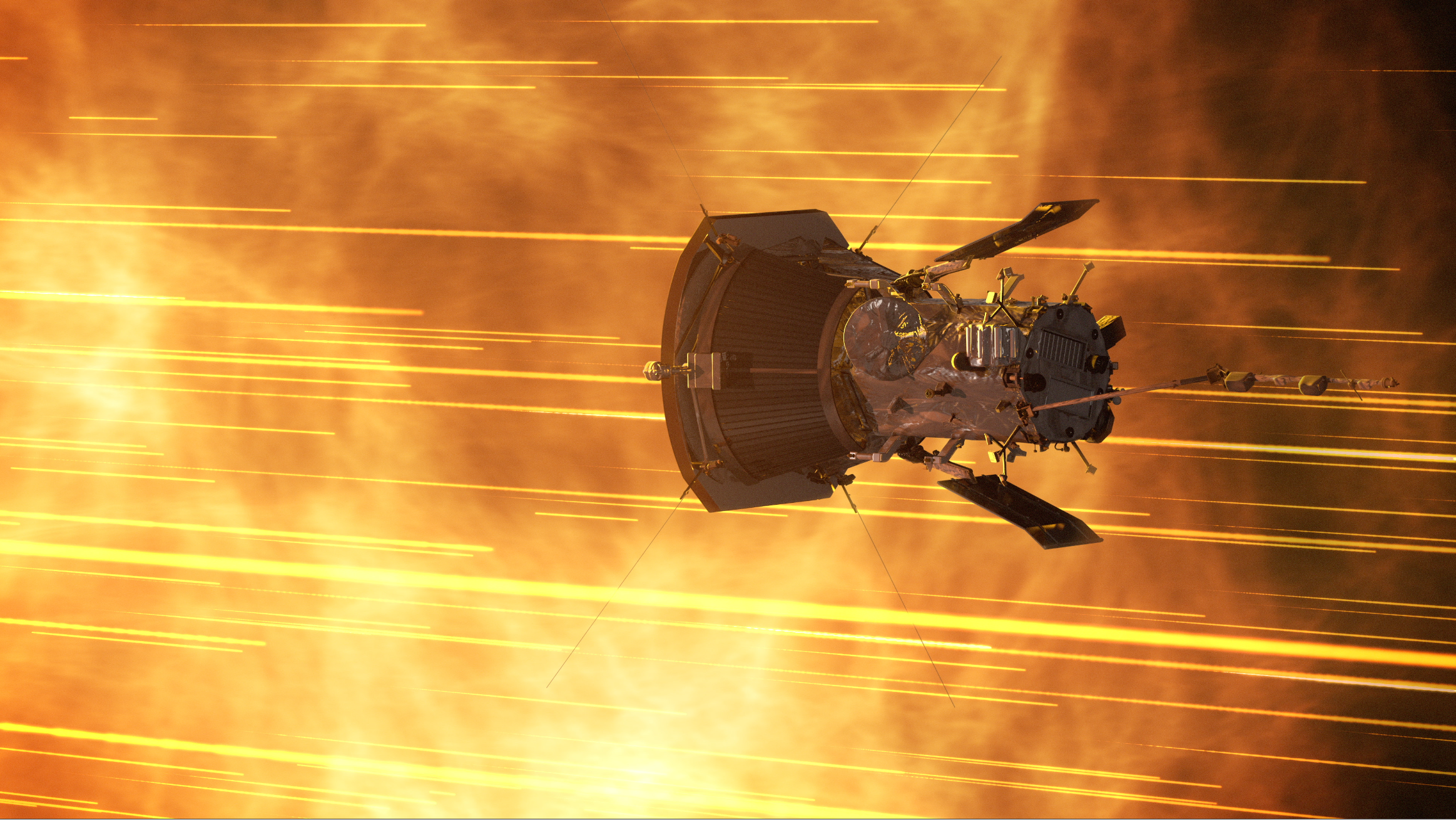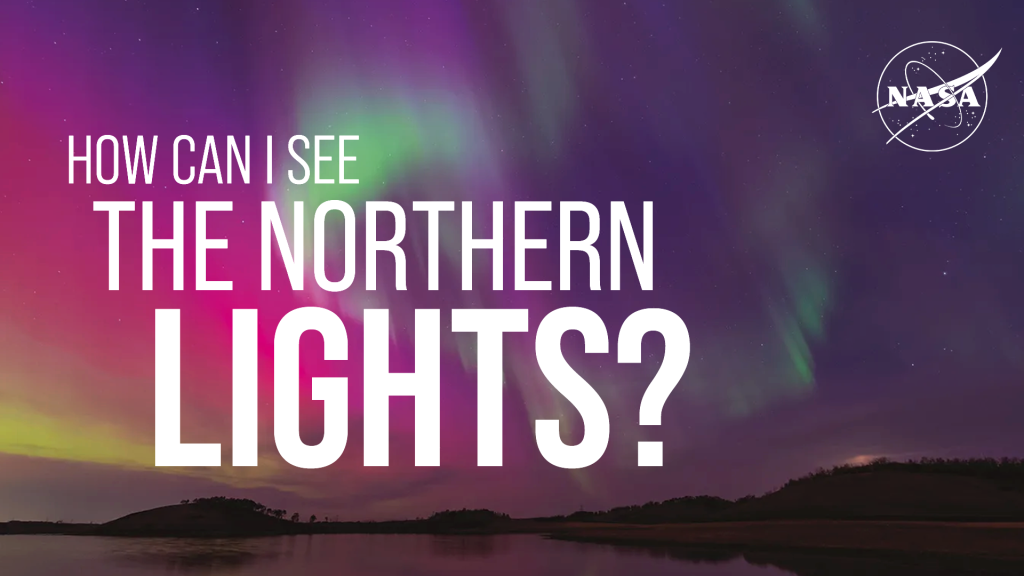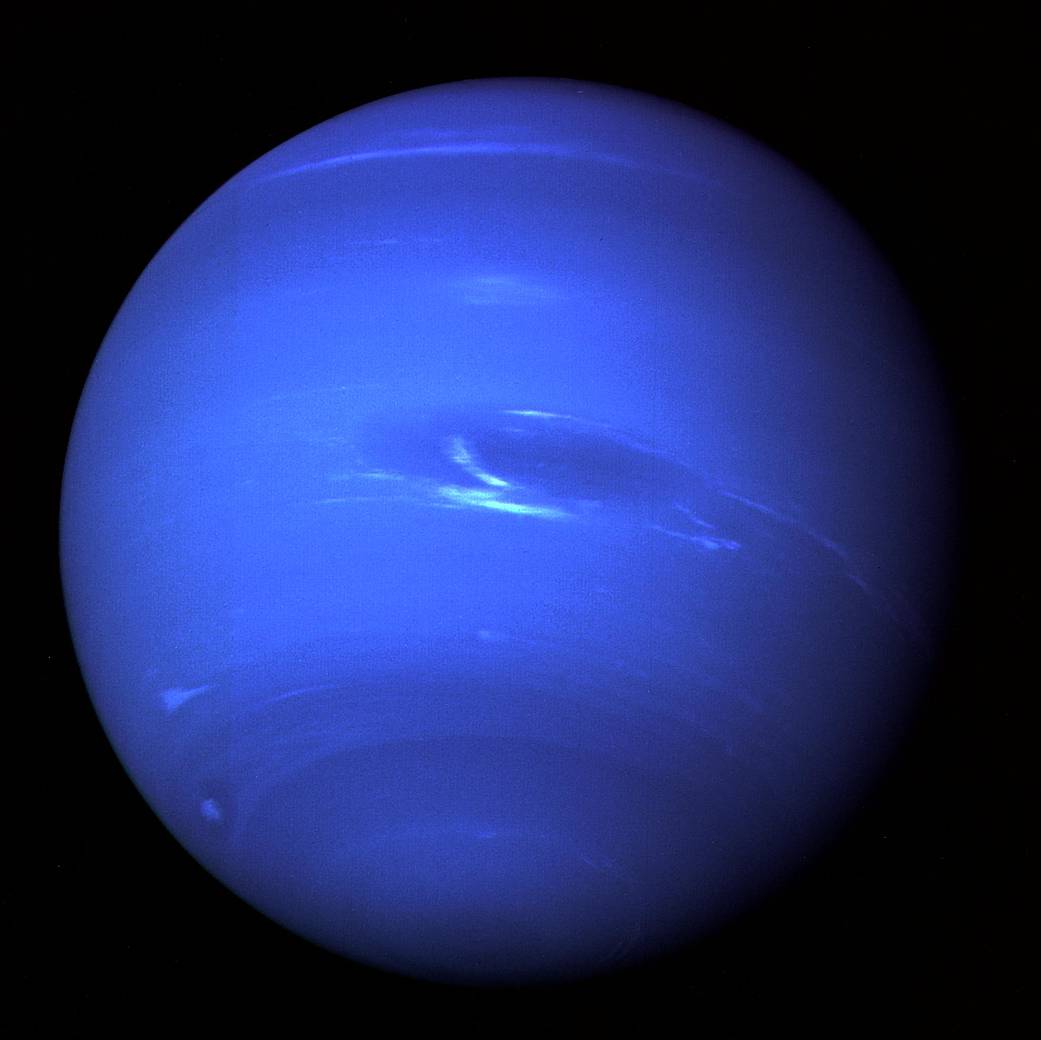On the night 175 years ago on Sept. 23-24, 1846, astronomers discovered Neptune, the eighth planet orbiting our Sun. The discovery was made based on mathematical calculations of its predicted position due to observed perturbations in the orbit of the planet Uranus. The discovery was made using a telescope since Neptune is too faint to be visible to the naked eye, and astronomers soon discovered a moon orbiting the planet. More than a century later, a second moon was discovered orbiting the planet. Our knowledge of distant Neptune greatly increased from the scientific observations made during Voyager 2’s flyby in 1989, including the discovery of five additional moons and confirmation of dark rings orbiting the planet.
This image of Neptune was taken by Voyager 2 less than five days before the probe’s closest approach of the planet on Aug. 25, 1989, and shows the “Great Dark Spot” — a storm in Neptune’s atmosphere — and the bright, light-blue smudge of clouds that accompanies the storm.
Image Credit: NASA/JPL-Caltech






























